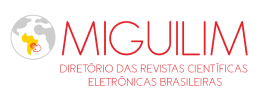Of thesauri to topic maps: new standard for the representation and the organization of the information
DOI:
https://doi.org/10.5007/1518-2924.2004v9n18p1Keywords:
Topic-Maps, Thesauri, Conceptual Maps, Representation of the information, Automatic Processing of the InformationAbstract
The noun growth of the number of thesauri has not served to respond to the necessity to work in multidiciplinar surroundings. In order to respond to this situation, it was fomented, at a first moment, the fusion of thesauri with object to adapt the preexisting ones to the necessities raised by the new dominions. Later, in the eagerness to take care of a world of changing information indeed and in growth, one began to work in the conceptual navigation maps. Until ending at the Topic maps arisen from the necessity to fuse indexes to incorporate therefore the utility of the hyperconnections.Its success was shaped in the norm ISO/ICE 13250:1999, that motivated the hypothesis of its use in the thesaurus elaboration, process in which the contradictions between both systems were pronounced. Reason why the essential conceptual elements in the architecture of Topic Maps are analyzed to find their costory in thesauri. This comparative study allows to indicate like limits of Topics maps, their conceptual indefinición, its innumerable relations and their ambiguity, which does not hide its advantages like a greater semantic wealth, the attainment of a new conceptual frame for fused dominions, the associations determined by verbs, and the capacity to organize informative resources of different type.Downloads
Downloads
Published
How to Cite
Issue
Section
License
Copyright (c) 2004 José Moreiro González, Juan Llorens Morillo, Miguel Ángel Marzal García-Quismond, Jorge Morato Lara, Pilar Beltrán Orenes, Sonia Sánchez Cuadrado

This work is licensed under a Creative Commons Attribution 4.0 International License.
The author must guarantee that:
- there is full consensus among all the coauthors in approving the final version of the document and its submission for publication.
- the work is original, and when the work and/or words from other people were used, they were properly acknowledged.
Plagiarism in all of its forms constitutes an unethical publication behavior and is unacceptable. Encontros Bibli has the right to use software or any other method of plagiarism detection.
All manuscripts submitted to Encontros Bibli go through plagiarism and self-plagiarism identification. Plagiarism identified during the evaluation process will result in the filing of the submission. In case plagiarism is identified in a manuscript published in the journal, the Editor-in-Chief will conduct a preliminary investigation and, if necessary, will make a retraction.
This journal, following the recommendations of the Open Source movement, provides full open access to its content. By doing this, the authors keep all of their rights allowing Encontros Bibli to publish and make its articles available to the whole community.
Encontros Bibli content is licensed under a Creative Commons Attribution 4.0 International License.
Any user has the right to:
- Share - copy, download, print or redistribute the material in any medium or format.
- Adapt - remix, transform and build upon the material for any purpose, even commercially.
According to the following terms:
- Attribution - You must give appropriate credit, provide a link to the license, and indicate if changes were made. You may do so in any reasonable manner, but not in any way that suggests the licensor endorses you or your use.
- No additional restrictions - You may not apply legal terms or technological measures that legally restrict others from doing anything that the license permits.
























